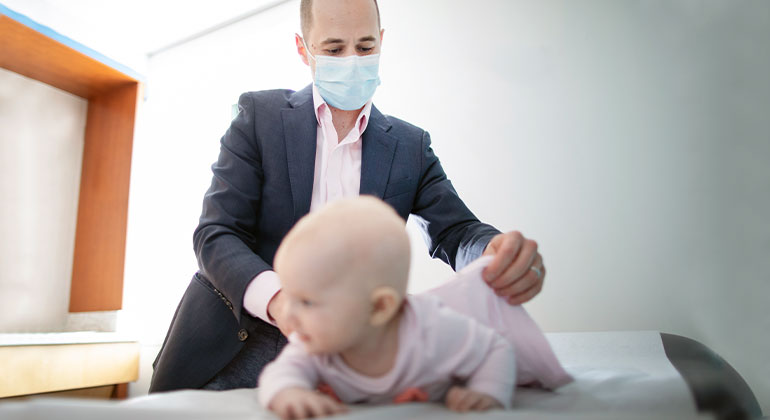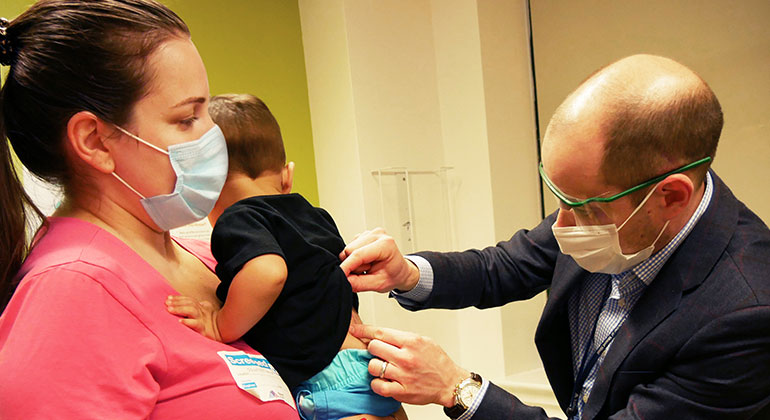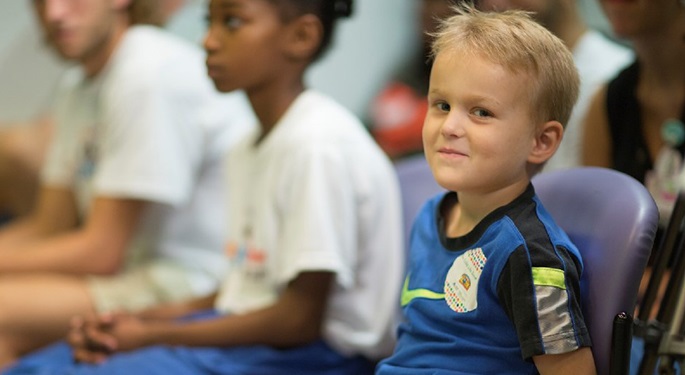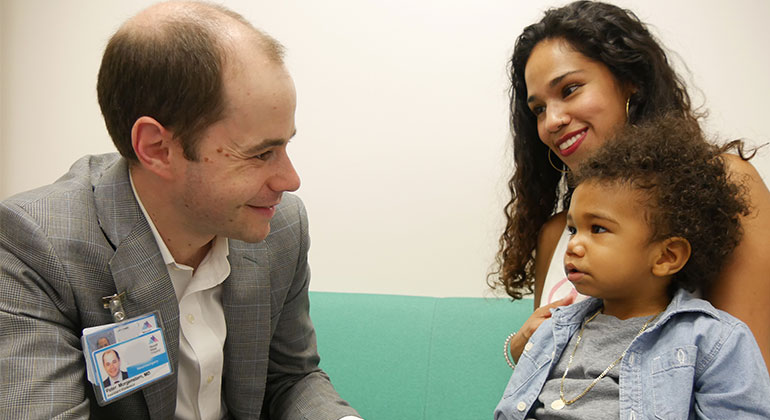Spine Disorders in Children




At the Mount Sinai Health System, our neurosurgery spine team is dedicated to providing the highest level of clinical excellence for children with spinal disorders. From the newest diagnostic studies to the least invasive interventions, we tailor our treatments to suit each child's needs as comprehensively as possible. We work with members of the departments of pediatrics, urology, general surgery, rehabilitation, neurology, neonatology, and plastic surgery to provide the optimal solution for your child's specific disorder.
Although spine disorders in children are rare, of those that do occur, these are the most common:
- Chiari malformation, type 1 pushes some of the brain contents down toward the spine. There are usually no symptoms. The disorder can be associated with syringomyelia.
- Chiari malformation type 2, which also pushes some of the contents of your brain down toward the spine, is associated with multiple abnormalities of the brain, including myelomeningocele and hydrocephalus.
- Dermal sinus is a small but deep opening in the skin that is on top of the spine and may be attached to the spine and spinal cord. Dermal sinus usually happens in the lower back, near the buttocks, and can lead to a tethered spinal cord or indicate recurrent meningitis. We treat this disorder by surgically removing the entire sinus tract.
- Hydrocephalus, happens when abnormal fluid accumulates in the brain. We can treat this by diverting this fluid to other parts of the body to relieve pressure on the brain.
- Lipomeningocele is a fatty mass that protrudes into and attaches to an incompletely developed spine.
- Myelomeningocele is a type of spina bifida aperta, in which the underdeveloped spinal cord emerges through the vertebra and breaks through the skin. It is associated with Chiari malformation type 2.
- Scoliosis is an abnormal curvature of the spine. It can worsen as the child grows. It can be present at birth (congenital) or develop during adolescence. A more serious condition may require corrective surgery.
- Spina bifida is an incompletely formed vertebra that is typically more common in the lower back. The vertebra may contain normal nerves and the spinal cord, with only abnormal bones, or it may contain fat, nerves, and other tissue passing through the bony opening.
- Spina bifida aperta is "open" spina bifida. No skin covers the abnormality, so nerves, spinal cord, or fatty tissue is seen immediately at birth.
- Spina bifida occulta is “hidden" spina bifida. This condition is not obvious at birth because skin covers the abnormality.
- Split cord malformation is a developmental abnormality in which the spinal cord is split in two different sections. The two cords are separated by either bone or cartilage. The malformation often requires surgery as the child grows because the spinal cord gets "hung up" on the bone or cartilage partition, leading to a tethered cord.
- Syringomyelia is abnormal accumulation of fluid in the spinal cord that leads to pressure on normal spinal cord tissue. We may have to divert the fluid to other parts of the body.
- Tethered cord happens when your spinal cord becomes abnormally attached to the surrounding tissue. The cord gets stretched, causing chronic injury to the cord. The condition can be caused by a variety of causes including myelomeningocele, lipomyelomeningcele, and scarring from prior surgery.
Detection and Diagnosis
Sometimes we discover spine disorders at birth due to abnormal leg or bladder function, an obvious physical deformity of the spine, or pain. Usually, we can see the spinal cord of children born with spina bifida or myelomeningocele on the surface of their lower back. We can also detect a spine disorder if your child has a fatty mass deep within the skin in the lower back, a small hole, patch of hair, or skin discoloration in the lower back, or malformations of the urologic and digestive tracts. If a child has a spine disorder left untreated, the child may develop difficulties walking or urinating, or experience pain in the lower back or legs.
To diagnose the underlying cause of your child's symptoms, your doctor will conduct a thorough physical examination, including an examination of all organ systems. Your physician may order X-rays, computed tomography, or magnetic resonance imaging to confirm the diagnosis.
Treatment
We develop individualized treatment plans for each child with a spinal disorders. We generally take children with or myelomeningocele to the operating room within a day or two, to move the spinal cord back into a normal position. For those who develop hydrocephalus, we typically perform a procedure to drain excess fluid from the brain.
Children who develop symptoms of pain, deformity, or weakness as they grow may require procedures to relieve pressure on their spinal cord and nerve roots or to release a "tethered" spinal cord. We work closely with the departments of neurosurgery, plastic surgery, urology, pediatrics, and genetics in evaluating and treating children. Treatments for children with spine disorders include:
- Detethering involvesreleasing the stretch, or tension, on the spinal cord.
- Myelomeningocele "repair" can be a challenge. While we often are unable to truly "repair" an abnormally developed spinal cord, we can bring the exposed spinal cord inside the body to protect it from future infection and injury.
- Decompression involvesremoving the bone, disc, or blood clot that is pushing on a nerve or spinal cord. We can do this through traditional "open" surgery or a minimally invasive procedure.
- Fusion involves stabilizing the bones of the spine (vertebrae) that are unstable or have too much abnormal motion. We usually do this by implanting titanium rods and screws, using either traditional "open" surgery or a minimally invasive procedure.
- Bracing meanssupporting the spine with externally placed collars, braces, or traction. Bracing can be a permanent solution or we can use it temporarily until it is safe to perform surgery.